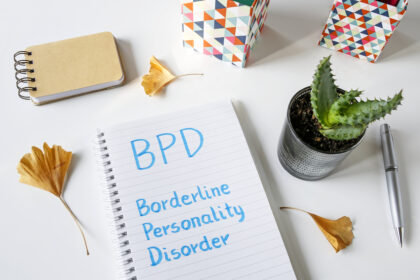Do I Have BPD?
If you have found this article, you may be thinking that you or a loved one has Borderline Personality Disorder (BPD). This condition can affect all aspects of one’s life and often control the direction one’s life takes. It can be upsetting, dangerous, and thoroughly frustrating. It has been estimated that BPD affects a large portion of the world population; and in fact, over 1.6 percent of the American population reportedly suffers from BPD (Chapman et al., 2022). With a condition this prevalent, it could be called a shame that so little research has been conducted to treat the condition. Determining if an individual has BPD by DSM requirements can be tricky as many BPD patients are notorious for manipulating their mental health professionals throughout the diagnosis stage. For those individuals who are diagnosed with BPD, they may continue to manipulate their doctors and therapists along the treatment path.
What is BPD?
Borderline Personality Disorder (BPD) can be defined as a chronic condition marked by intense mood swings, erratic interpersonal relationships, impulsive behavior, and self-harming or suicidal behavior (Kulacaoglu & Kose, 2018). The condition is one of the hardest mental illnesses to treat (Sulzer, 2015), which is why many mental health professionals actually turn down BPD patients. These patients are often branded with a “difficult patient” status (2015). This can make it very hard for a BPD patient to find treatment plans that work. BPD patients are often impulsive and seem to have a difficult time following medical and therapy regimens, which often leads to failure in treatment.
For a full enumeration of Borderline Personality Disorder, we encourage you check out our other article, “What is BPD?” to better understand the risk factors and symptoms.
Common Traits of BPD
There is a wide array of BPD symptoms, but the most important two are an intense fear of abandonment, an unformed self-image, and the engagement in risky behavior. This is a more complete list of the common symptoms, with the above-mentioned symptoms included:
- Unreasonable or strong fear of abandonment
- Intense mood swings which can last hours or days
- General patterns of unstable relationships (whether romantic, with friends, or with family)
- Idealizing an individual one moment and condemning them another
- Rapid changes in self-identity or self-image
- Goals, values or morals which shift heavily and quickly
- Stress-accompanied periods of paranoia
- Loss of contact with reality or a loss of touch with oneself
- Intense impulsivity or impulsive behavior
- Risky behavior (reckless driving, unprotected sex, gambling, heavy substance use, reckless driving, engaging in fights, etc.)
- Self-sabotaging behavior
- The development of Substance Use Disorders (SUDs) or the heavy use of substances
- General irritability
- Unwarranted or exaggerated feelings of shame or guilt
- Intense feelings of jealousy
- Feelings of emptiness, meaninglessness, or apathy
- Irrational or inappropriate anger
- Spiteful or vindictive behavior
- & More
Some BPD symptoms manifest differently from person to person and this symptom list should not be considered entirely inclusive. Additionally, many patients experience BPD with only a few symptoms, while others experience all of the above-mentioned BPD symptoms and sometimes more.
Borderline Personality Disorder Test
Although every case of BPD is different, there are oftentimes signs or hints that an individual may be suffering from BPD. The below test was crafted by Sensitive Stability to help you determine if you or a loved one may be suffering from symptoms commonly associated with Borderline Personality Disorder. To take the test, answer each question honestly, with 1 being “never” and 5 being “always”.
Final Words on Determining if an Individual Suffers From BPD
Although a true diagnosis requires a mental health professional, usually a doctor or psychologist, it is still possible for an individual to explore themselves and attempt to resolve any issues they can themselves. If you have found this page and taken this test, it means you are already making the first steps towards better self-management and an improved life. Sensitive Stability was created to help individuals with BPD learn the necessary skills regain control of their life. It is a psychoeducational program developed by a BPD survivor and condition experts to better inform BPD individuals about their condition and how they can better manage their behavior.
For more information on how you can improve manageability of the condition if you or a loved one suffers from BPD, we encourage you check out our other article “Coping with BPD” to see what skills are obtainable for BPD.
Important Disclaimer: This is not a medical survey or study, but a psychoeducational quiz meant for educational purposes only. If you believe you have BPD, you should seek medical advice from a medical professional. If you or someone you know is having a medical emergency, experiencing a BPD episode and needs help, or exhibiting parasuicidal or suicidal behavior, please contact emergency services immediately. Additionally, there are many free suicide hotlines including the National Suicide Prevention Lifeline at 1-800-273-8255.
References
Chapman, J., Jamil, R., and Fleisher, C., (2022). Borderline Personality Disorder, National Library of Medicine: StatPearls, Treasure Island, FL, Retrieved from: https://www.ncbi.nlm.nih.gov/books/NBK430883/
Kulacaoglu, F., and Kose, S., (2018). Borderline Personality Disorder (BPD): In the Midst of Vulnerability, Chaos, and Awe, Brain sciences, 8(11), 201. DOI: https://doi.org/10.3390/brainsci8110201
Sulzer S., (2015). Does “difficult patient” status contribute to de facto demedicalization? The case of borderline personality disorder, Social science & medicine (1982), 142, 82–89. https://doi.org/10.1016/j.socscimed.2015.08.008




